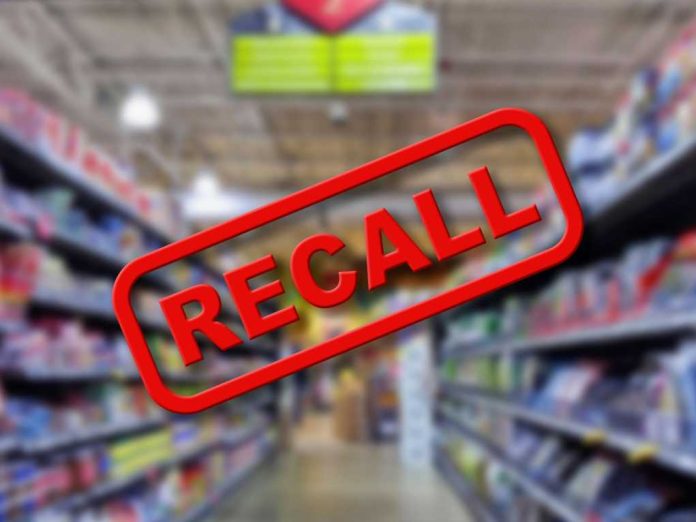
A simple pasta dinner became a deadly game of roulette for thousands this fall, as a massive recall tied to six deaths and dozens of hospitalizations reached across 18 states—raising urgent questions about the safety of America’s food supply.
Story Snapshot
- Six people have died and over 40 hospitalized after consuming contaminated pasta products.
- The recall now spans 18 states, impacting a major national pasta brand with a previously strong safety record.
- Investigators trace the outbreak to Bacillus cereus toxin, revealing systemic vulnerabilities in food manufacturing and oversight.
- The crisis has triggered calls for regulatory reforms and shaken public confidence in staple foods.
When Dinner Turns into a Crisis: Timeline of the Recall’s Expansion
October 2025 began with scattered reports of severe food poisoning in several states—cases so serious that hospitals flagged them for immediate investigation. Within days, health officials realized these weren’t isolated incidents: epidemiologists traced the outbreak to batches of pre-packaged pasta meals distributed by one of the country’s most trusted brands. On October 28, the manufacturer issued a voluntary recall, but by then, the damage was escalating. Just two days later, the CDC confirmed six deaths and over 40 hospitalizations, prompting the recall’s swift expansion to 18 states as new cases surfaced. What began as a local scare ballooned into one of the most severe food safety crises in recent memory.
By November 4, the FDA and CDC were in the thick of a nationwide investigation, advising consumers to check their pantries and dispose of any affected products. Emergency rooms across the country braced for new patients as public health advisories flashed across news outlets and social media feeds. The number of confirmed cases crossed 60, with the full scope of the tragedy still unfolding.
Broken Chain: What Caused the Contamination?
Lab tests revealed the culprit: Bacillus cereus toxin, a dangerous contaminant that rarely causes fatalities but can be deadly under the right (or wrong) conditions. The pasta brand at the center—previously lauded for its safety protocols—found itself under a harsh spotlight. The investigation quickly exposed the complexities of the modern food supply chain, where ingredients are sourced globally and traceability often falls short. Regulatory agencies like the FDA and USDA, already stretched thin by recent food safety scares, now faced mounting criticism for inspection gaps and resource constraints. The echoes of past food recalls—from the 2018 romaine lettuce E. coli outbreak to the infamous 2022 infant formula recall—surfaced in the media and Congress, fueling a sense of déjà vu and frustration among the public.
Consumers who trusted familiar brands now felt betrayed. Grocery chains scrambled to pull products from shelves, while the manufacturer issued a public apology, promised full cooperation, and launched an internal review. The CDC’s updates grew more urgent, warning of symptoms and urging anyone who purchased the recalled pasta to act without delay.
Who’s Accountable? The Battle for Answers and Reform
Responsibility for the crisis rippled across the industry. The manufacturer’s leadership, FDA officials, and state health departments became key players in the unfolding drama. Regulatory agencies wielded enforcement power, but their ability to prevent such disasters was called into question by lawmakers and consumer advocates. The stakes—public health, economic fallout, and the integrity of America’s food system—could not be higher. Behind the scenes, retailers and distributors worked overtime to track down every last package, balancing the imperative of customer safety with the reality of supply chain chaos.
As the investigation deepened, the finger-pointing began: supply chain complexity, underfunded inspections, and the relentless pace of “just-in-time” inventory all took their turn in the spotlight. Some experts argued that recalls, while alarming, demonstrate a functioning safety net; others countered that the very need for such large-scale recalls signals deeper regulatory failure. Food safety scholars and industry veterans alike agreed on one thing: the scale and lethality of this outbreak were unprecedented for a staple food like pasta.
Aftershocks: Public Trust, Industry Shifts, and What Comes Next
In the short term, the recall has rattled consumer confidence and left manufacturers and retailers counting their losses in the tens of millions. Lawsuits loom on the horizon. Major grocery chains face the dual challenge of protecting customers and restoring faith in their brands. The public debate is only just beginning, with calls for congressional hearings and urgent demands for regulatory overhaul.
Long-term, this incident is likely to reshape the food industry’s approach to safety and transparency. Experts anticipate stricter regulations, greater investment in traceability technology, and a possible consumer shift toward local or organic brands. The regulatory agencies themselves face pressure to modernize their inspection regimes and address the gaps exposed by this crisis. As Dr. Sandra Eskin of the USDA put it, the outbreak is a “wake-up call for robust traceability and rapid response protocols.” For millions of Americans, the question now lingers: how safe is the food on our tables, and who is watching out for us when the system fails?
Sources:
FDA 2025 Recalls of Prepared Pasta Meals
The Guardian: Listeria outbreak in pasta meals linked to six deaths
Fox Business: Listeria outbreak grows with more deaths, illnesses reported
NBC Chicago: Pasta meals listeria outbreak: 6 dead, 27 sick in 18 states







